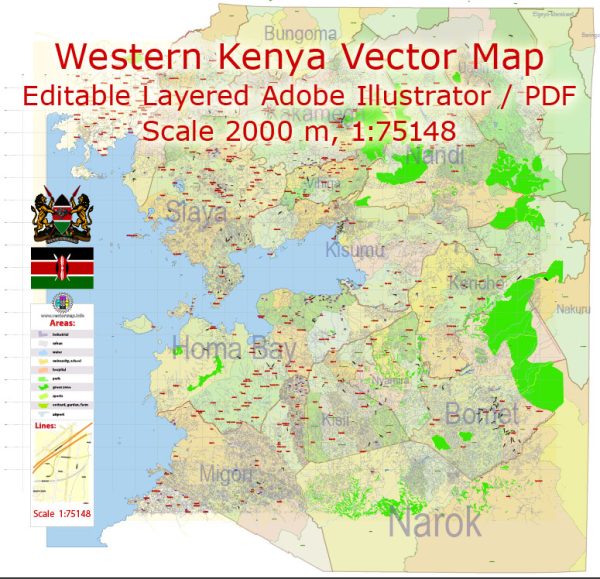Transportation infrastructure in Kenya’s Western region plays a crucial role in facilitating economic activities, trade, and connectivity. Key components include:
- Roads:
- The Western region is connected by an extensive network of roads, including major highways and smaller roads that link rural areas. The roads are essential for the transportation of goods and people.
- Key highways in the region include the A1 road, which is part of the Northern Corridor, connecting the region to other parts of Kenya and neighboring countries like Uganda and Rwanda.
- Efforts have been made to improve and expand road infrastructure to enhance connectivity and support economic development.
- Public Transportation:
- Public transportation, such as buses and matatus (shared minivans), is widely used for commuting within and between towns in the Western region. These modes of transportation are crucial for daily commuting and the movement of goods.
- Major towns often have bus terminals where travelers can access different routes to various destinations.
- Rail Transport:
- The Western region is served by the Kenya Railways network. The railway plays a significant role in transporting goods and passengers. Efforts have been made to revitalize and modernize the railway system to improve efficiency.
- Airports:
- There are airports in the Western region, including Kisumu International Airport. Kisumu serves as a major air transport hub, connecting the region to domestic and international destinations.
- Bridges:
- Due to the region’s numerous rivers, there are bridges that facilitate transportation across water bodies. These bridges are critical for maintaining connectivity and ensuring the smooth flow of goods and people.
- Infrastructure Projects:
- The government of Kenya has implemented and continues to invest in various infrastructure projects to improve transportation in the Western region. These projects may include road expansions, construction of new roads, and upgrades to existing transportation facilities.
- Challenges:
- Despite ongoing improvements, there may still be challenges such as inadequate maintenance, especially during adverse weather conditions. Some rural areas may face accessibility issues, requiring continued efforts to address infrastructure gaps.
It’s important to note that transportation infrastructure is subject to continuous development and changes. For the most recent and specific information on the transportation infrastructure in Kenya’s Western region, it is advisable to consult local authorities, transportation agencies, or official government sources for the latest updates and plans.
Vectormap.Net provide you with the most accurate and up-to-date vector maps in Adobe Illustrator, PDF and other formats, designed for editing and printing. Please read the vector map descriptions carefully.


 Author: Kirill Shrayber, Ph.D.
Author: Kirill Shrayber, Ph.D.